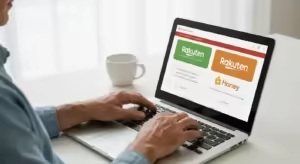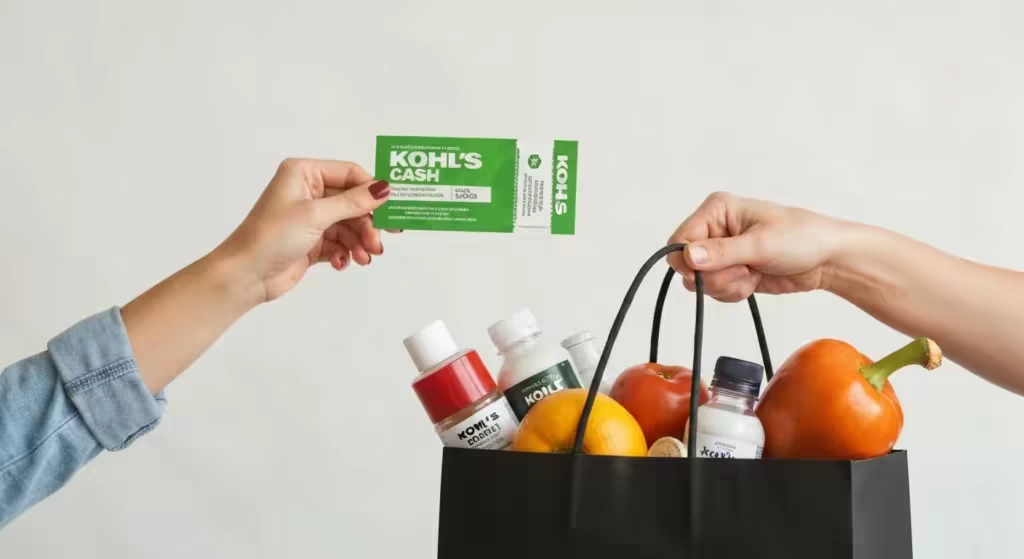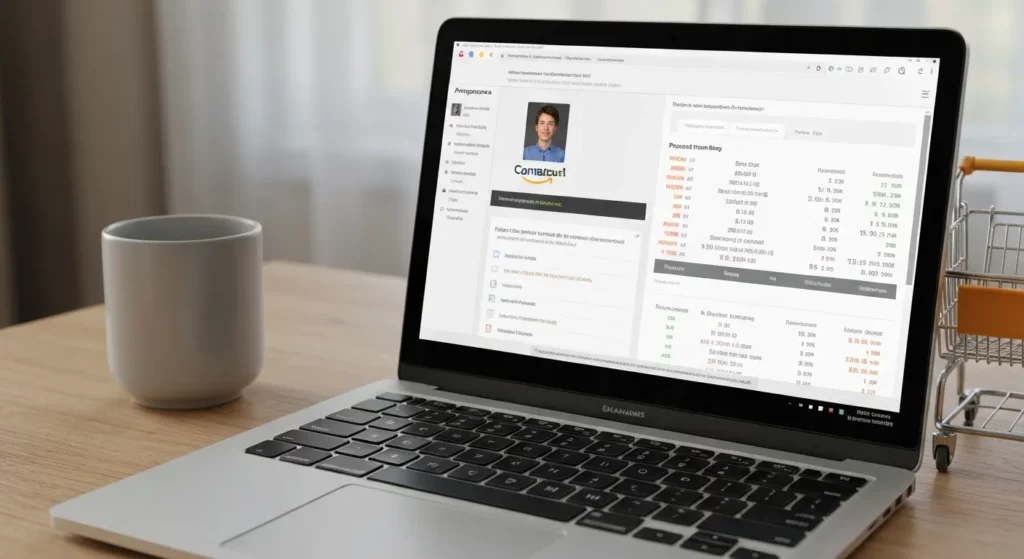I never planned on becoming an “online seller.” It wasn’t a retirement goal or a lifelong dream. It started quietly, with a box of my late husband’s old model trains I found in the attic. He’d loved them, and they were just gathering dust. A friend mentioned that collectors paid good money for them on eBay. So, with a bit of help from my granddaughter, I took some photos, wrote a description, and put them up for sale.
The thrill of that first sale was electric. A “cha-ching” sound from my phone, a notification from PayPal. It was just a few hundred dollars, but it felt like magic. I had turned attic dust into money for a nice dinner out. I was hooked. Soon, I was exploring local estate sales and thrift stores, hunting for treasures I could flip online. It was a perfect hobby—it got me out of the house, I met interesting people, and it brought in a little extra cash. I thought of it as a modern-day garage sale, one that never closed.
For the better part of a year, that’s all it was. A fun, profitable hobby. The money went into my regular checking account, mixed in with my pension and Social Security. I used it for groceries, gifts for the grandkids, and the occasional vacation. Taxes? The thought never even crossed my mind. Why would it? This was just pocket money.
That blissful ignorance came to a screeching halt one cold January afternoon. I opened my email and saw a subject line that made my stomach clench: “Your Form 1099-K from PayPal is Ready.”
The Wake-Up Call I Never Saw Coming
I stared at the screen, my heart thumping. What in the world was a 1099-K? I opened the attached PDF. It was an official-looking IRS form, and at the top, in a bold box, was a number. A very large number. It was the sum of every single payment I had received through PayPal that year. It was thousands of dollars.
My first feeling was pure, unadulterated panic. The form said a copy had also been sent to the IRS. They knew. They knew about my “pocket money.” In my mind, I was already picturing auditors knocking on my door, demanding to know why I hadn’t declared this income. The joy I’d felt with every “cha-ching” evaporated, replaced by a cold dread.
I thought, “But that’s not my profit! That’s just the total sales!” I hadn’t made nearly that much. That number included what I paid for the items, the exorbitant shipping costs, the endless fees eBay and PayPal took. But the form didn’t show any of that. It just showed a big, scary income figure tied to my name and Social Security number.
That night, I didn’t sleep. I sat at my kitchen table, a single lamp casting long shadows, trying to make sense of it all. I had no records. None. I had paid cash for most of my inventory at flea markets and yard sales. I’d bought shipping supplies at the dollar store and paid with whatever was in my wallet. I had no idea what my real profit was. I only knew that the IRS thought I’d earned a lot more than I had.
My Shoebox of Despair
My first attempt to fix the situation was a disaster. I dug out an old shoebox and started trying to piece together my business expenses. I scrolled through months of my personal bank and credit card statements, my eyes blurring as I tried to separate a purchase for bubble wrap from a purchase for cat food. It was impossible.
I remember one specific moment of utter hopelessness. I was trying to figure out the cost of a beautiful vintage vase I’d sold for $150. I knew I’d bought it at a dusty antique mall six months prior. I vaguely remembered paying cash, maybe $20? Or was it $30? Did I buy something else that day? I had no receipt, no record, nothing. Without proof, as far as the IRS was concerned, my cost for that vase was zero. That meant I would be taxed on the full $150.
I multiplied that problem by the hundreds of items I’d sold. The feeling was overwhelming. I felt foolish and irresponsible. My fun little hobby had morphed into a terrifying financial liability, and it was all my fault. I seriously considered just shutting the whole thing down. The stress simply wasn’t worth it.
That was my low point. Surrounded by a chaotic pile of statements and receipts that made no sense, I felt completely out of my depth. I realized something had to change. I could not do this alone.
Finding a Lifeline: The Power of Professional Help
Swallowing my pride was the best business decision I ever made. I knew I needed an accountant, but I was embarrassed to show anyone my mess. I imagined a stern-faced CPA in a suit looking down at my shoebox with disdain. But the fear of the IRS was greater than my fear of embarrassment.
I asked a friend who also sold crafts online, and she recommended a local accountant named Sarah. “She gets it,” my friend said. “She works with a lot of small e-commerce people.”
Walking into Sarah’s office was nerve-wracking, but she immediately put me at ease. She didn’t lecture me. She listened. I poured out my story—the fun start, the 1099-K shock, the shoebox disaster. She just nodded calmly and, when I was done, she smiled.
“You’re not the first person to walk in here with this exact story,” she said. “And you won’t be the last. Let’s figure this out together.”
The relief was so immense I nearly cried. Sarah helped me painstakingly reconstruct that first year. We did the best we could, combing through my statements and making reasonable estimates where necessary. It wasn’t perfect, and I know I paid more in taxes than I should have because of my poor records. But we got it filed. The monster was slain.
More importantly, Sarah gave me a roadmap for the future. She didn’t just fix the past; she taught me how to prevent the problem from ever happening again. The lesson was seared into my brain: Proactive organization is infinitely cheaper and less stressful than reactive chaos.
Building My Fortress: A System for Sanity and Savings
Armed with Sarah’s advice, I resolved that my second year as an online seller would be different. I was going to treat this like a real business, even if it was a small one run from my spare bedroom. I built a system, piece by piece. It wasn’t complicated, but it was consistent.
Step 1: The Magic of a Separate Bank Account
The very first thing I did was go to my local credit union and open a new, dedicated checking account and get a debit card just for my business. Sarah called this the “golden rule” of small business bookkeeping. All income from eBay, Etsy, or any other platform went directly into this account. Every single business-related purchase—inventory, shipping supplies, software—was paid for from this account or with a dedicated business credit card.
This simple act was revolutionary. It instantly untangled my business and personal finances. No more scrolling through grocery receipts to find the cost of packing tape. At the end of the month, my business bank statement was a clean, clear record of my income and expenses.
Step 2: My Humble-But-Mighty Spreadsheet
I’m comfortable with computers, but I’m no tech wizard. Sarah suggested I didn’t need fancy accounting software just yet. A simple spreadsheet would do. I created a Google Sheet—it’s free and I can access it from my computer or my tablet.
I created two main tabs. The first was for Income and Cost of Goods Sold (COGS). Every time I sold an item, I created a new row and filled in these columns:
- Date Sold: The date of the transaction.
- Item Description: A brief description (e.g., “Vintage Blue Murano Glass Vase”).
- Platform: Where I sold it (eBay, Etsy, etc.).
- Sale Price: The amount the buyer paid for the item itself.
- Shipping Charged: The amount the buyer paid for shipping.
- Total Income: The sum of the Sale Price and Shipping Charged.
- Platform Fees: The fees taken by eBay or Etsy.
- Payment Fees: The fees taken by PayPal or the platform’s processor.
- Shipping Cost: What I actually paid to ship the item.
- Date Purchased: The date I acquired the item.
- Source: Where I bought it (e.g., “Goodwill,” “Elm Street Flea Market”).
- Cost of Item (COGS): This was the most important number. The actual price I paid for the item.
- Net Profit: A simple formula that automatically calculated my profit on that one item.
It sounds like a lot, but I made it a habit. Every night, I’d sit down for 15 minutes with a cup of tea and update my sheet for the day’s sales. It became a calming ritual. I could see, right there in black and white, exactly how much money I was truly making.
Step 3: Tracking Every Last Business Expense
My second spreadsheet tab was for General Business Expenses. This is where I learned the true power of deductions. These were all the costs of running my business that weren’t tied to a specific item. Based on Sarah’s advice, I started tracking everything.
- Shipping Supplies: Boxes, bubble wrap, packing tape, labels, printer ink. I used to think of these as small, incidental costs. But when I started adding them up, I was shocked. It was hundreds of dollars a year that I could deduct from my income. I kept every receipt in a simple accordion file, organized by month.
- Mileage: Every trip to the post office, the thrift store, or an estate sale was a business trip. I got a simple mileage tracking app on my phone. With a tap of a button, it would log my trips. The standard mileage deduction is significant, and I was leaving a lot of money on the table by not tracking it.
- Office Supplies: Pens, paper, folders—anything I used for my business.
- Software & Subscriptions: If I paid for an eBay store subscription or any other tool, it was a deductible expense.
- Education: I bought a book on identifying antique pottery. That was a business expense. I took an online course on product photography. That was a business expense, too.
- The Home Office Deduction: This one scared me at first. I’d heard horror stories about it being an audit trigger. Sarah demystified it for me. She explained the IRS has a simplified method that’s very straightforward. I just had to measure the square footage of the corner of my spare room that was used exclusively for my business (storing inventory, packing, taking photos). It wasn’t a huge deduction, but it was honest, legitimate, and easy to calculate. It felt good to claim it with confidence.
The Tax Man Cometh… Four Times a Year
Just when I thought I had it all figured out, Sarah introduced me to a new concept: Quarterly Estimated Taxes. My heart sank a little. “You mean I have to do this four times a year?” I asked.
“You have to pay four times a year,” she corrected gently. “The ‘doing’ part is easy now that you have your system.”
She explained that as a self-employed person, I was my own employer. I didn’t have a company withholding taxes from my paycheck. It was now my responsibility to send that money to the IRS and my state throughout the year. If I waited until April 15th to pay it all, I could face underpayment penalties.
This led to the single most effective habit I developed. Sarah advised me to set aside a percentage of my net income for taxes. We decided on 30% to be safe—that would cover federal income tax, state income tax, and the self-employment taxes (Social Security and Medicare).
So, I opened another new account: a high-yield savings account that I nicknamed my “Tax Account.”
Here’s my routine now: At the end of every week, I look at my spreadsheet to see my total net profit for that week. I calculate 30% of that amount and transfer it immediately from my business checking account to my tax savings account. That money is no longer mine. It belongs to Uncle Sam. I don’t touch it, I don’t look at it, I don’t consider it part of my available funds.
When April, June, September, and January roll around, I log into that savings account, see how much I’ve saved up, and make my estimated payment to the IRS and my state. There’s no panic, no scrambling. The money is just there, waiting.
Peace of Mind is the Best Profit Margin
The following January, I got that same email from PayPal: “Your Form 1099-K is Ready.”
But this time, I didn’t feel a single flutter of panic. I smiled. I downloaded the form, checked the total against my spreadsheet, and saw that they matched. When it was time to see Sarah, I didn’t bring her a shoebox of chaos. I brought her a single sheet of paper with my neatly totaled income, cost of goods sold, and categorized expenses. I emailed her a copy of my spreadsheet. Our meeting took 30 minutes instead of three hours.
When she finished my return, I actually got a small federal refund. By tracking every single expense, I had lowered my taxable income so much that my quarterly payments had more than covered my liability. The feeling wasn’t just relief; it was a profound sense of accomplishment. I had done it. I had taken control.
Today, my online business is a source of joy again. I still love the thrill of the hunt and the “cha-ching” of a sale. But the peace of mind I have now is the real prize. The system I built isn’t complex, but it’s consistent. It’s a set of habits that runs quietly in the background of my business.
My Story’s Lessons, For You
Looking back on my journey from terror to tranquility, a few core truths stand out. If you’re starting an online selling venture, or if you’re in that “shoebox phase” right now, I hope my story can offer you a shortcut to peace of mind.
- Stop Calling It a Hobby Immediately. The moment money changes hands, the IRS considers it a business. Adopt a business mindset from your very first sale. This mental shift is the foundation for everything else.
- Separate Your Finances Yesterday. Open a dedicated bank account. It is the single easiest and most powerful thing you can do to simplify your life come tax time. Commingling funds is the root of all bookkeeping evil.
- A Simple System is Better Than No System. Don’t get intimidated by fancy software. A basic spreadsheet that you actually use is a thousand times more effective than a powerful program you never open. Just start tracking.
- Become a Detective of Deductions. Realize that every roll of tape, every mile in your car, every box you buy is you spending your post-tax money to run your business. Tracking these expenses allows you to use pre-tax money instead. It adds up to real savings.
- Pay Your Future Self (and the IRS). The “set-aside” method is your best friend. Create a separate tax savings account and fund it religiously. When you pay taxes quarterly, you’re not hit with a massive, soul-crushing bill in April. You’re just forwarding money that was never really yours to begin with.
- Don’t Be Afraid to Ask for Help. My best investment wasn’t a rare collectible; it was an hour of Sarah’s time. A good accountant who understands e-commerce is not a cost; they are a profit center. They will save you more money than they charge you, and their value in stress reduction is priceless.
My online selling adventure has been one of the most rewarding chapters of my life. It gave me a renewed sense of purpose and a fun challenge. But conquering the financial side of it—facing down the 1099-K and building a system to manage it—was a different kind of victory. It was a victory for my own competence and confidence. And that’s a profit that can’t be measured on any spreadsheet.














